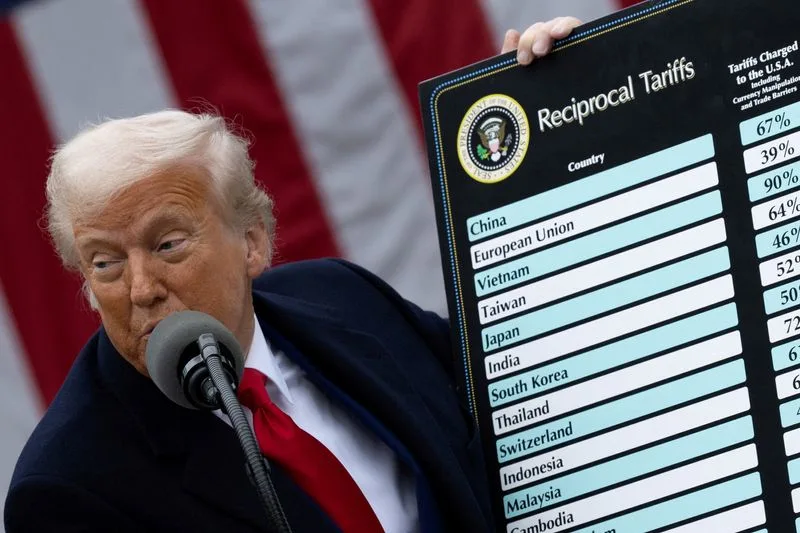After a brief period of calm, the world is once again on edge over U.S. trade policy.
This week, attention has shifted back to tariffs, with the White House preparing to send out a wave of official notices that could shake up international trade relationships all over again.
Trump Set to Send New Tariff Letters to Global Trade Partners
President Trump is expected to personally sign and send more than a dozen letters to different countries, each one outlining what tariffs they will need to pay if they want to keep selling goods in the U.S.
These letters, according to insiders, are set to start rolling out from Monday onward.
The administration hasn’t revealed exactly which nations are on the list, but the implications are already causing ripples.
The mere talk of these letters has replaced the usual chatter about “trade deals,” with officials making it clear that this new round of tariffs is about asserting U.S. control over trade.
Commerce Department Confirms Start Date for Tariffs
Commerce Secretary Howard Lutnick confirmed that the new tariffs would officially take effect on August 1, giving global markets and trading partners just weeks to prepare—or renegotiate.
And yet, there’s still a hint of flexibility.
The administration hasn’t fully closed the door on striking deals.
In fact, the next 48 hours could be filled with high-stakes negotiations as the clock ticks toward the previously announced July 9 deadline.
Negotiation Offers Flooding In, Says Treasury Secretary
Speaking to CNBC, Treasury Secretary Scott Bessent revealed that trade talks have been heating up behind the scenes.
“My mailbox was full last night,” he said, referencing a rush of new proposals and counteroffers from various countries.
“We’re expecting a couple of very busy days,” Bessent added, suggesting that several nations may be trying to avoid being hit with higher tariffs by making last-minute concessions.
White House Says It’s Still Open for Business
Despite the pressure and looming deadlines, top White House economic adviser Kevin Hassett told CBS’s Face the Nation that the administration remains open to all discussions.
“We’re willing to talk to everybody about everything,” he said.
However, Hassett also acknowledged that deadlines are a reality, and not every country might get their proposals in on time.
Ultimately, he emphasized, the final decision rests with the president.
Flashback to “Liberation Day” and Tariff History
This latest tariff maneuver dates back to Trump’s declaration of April 2 as “liberation day,” when he first unveiled sweeping tariffs.
After a sharp market downturn, he initiated a 90-day pause to calm investor nerves.
The baseline tariff introduced was 10%, but some nations were slapped with additional duties as high as 50%.
Though those aggressive, country-specific tariffs were eventually suspended, the White House has shown it’s not afraid to go back to that strategy.
Some Trade Deals Reached—But Talks Are Far From Over
Since then, deals have been struck with countries like the United Kingdom, China, and Vietnam, but even those agreements are still under negotiation.
Trade adviser Peter Navarro famously promised “90 deals in 90 days,” but many of those have yet to materialize or be finalized.
Wall Street Reacts with Caution as Tariff Tensions Rise
As investors absorb the news, U.S. stock markets responded with early caution on Monday.
The S&P 500 dipped slightly—less than 1%—while the Dow Jones fell by 96 points.
Bond markets showed mixed signals, reflecting the uncertainty hanging over the economy.
EU Faces the Threat of Major Tariffs on Food Exports
Among the most concerning developments is a potential 17% tariff on food exports from the European Union.
That threat, if carried out, could seriously damage Europe’s agricultural industry.
Without a deal, the EU could also be staring down a massive 50% tax on all goods it sends to the U.S.
EU officials told the Financial Times that this new food tariff threat marks a serious escalation in trade tensions.
Legal Battles Over Tariffs Still Unresolved
Meanwhile, two U.S. federal courts have already ruled against Trump’s use of the International Emergency Economic Powers Act to impose tariffs by declaring a “national emergency.”
However, those rulings are currently on hold, which means the tariffs remain active while appeals are being processed.
What Happens Next?
With letters going out, deadlines looming, and negotiations still happening in real-time, the world is watching closely.
Will countries scramble to strike last-minute deals?
Or will a new wave of tariffs trigger another round of market turmoil and trade retaliation?
The next few days could bring some big answers.



